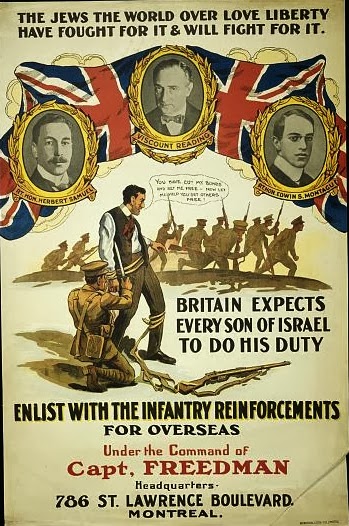Posted: 27 Feb 2014
 |
Turkish troops in the Jezreel Valley preparing to move against the British at the Suez Canal in 1914 (Library of Congress)
|
 |
Recruiting poster for Jewish soldiers,
1918 (Library of Congress)
|
We have also featured photos and essays on the Jewish soldiers from Britain, Australia, the United States and Canada in the Jewish Legion.
Understandably, the British Imperial War Museums contain thousands of photographs from battles around the world, and we have featured several of the pictures from the IWM, as well as from the Australian and New Zealand Army sites.
Israeli tour guides, Tamar HaYardeni and Yishai Solomon, recently pointed us to the numerous photographs of the Jewish inhabitants of Palestine who the British soldiers met and photographed.
 |
Recruits for the 40th (Palestine) Battalion, Royal Fusiliers in Jerusalem,
1,000 were recruited. Summer 1918. (Imperial War Museums)
|
Within months of capturing Jerusalem in December 1917, the British Army launched a recruitment drive in Palestine itself. The IWM photos here show recruits from Jerusalem and Jaffa on their way to an army training camp in mid-1918.
It appears that many of the recruits were Jewish -- Orthodox men in Jerusalem and secular men in Jaffa.
 |
| Recruits in Jerusalem, 1918 (Imperial War Museums) |
 |
Assembling recruits for the 40th (Palestinian) Battalion, Royal Fusiliers, at Jaffa, before their departure to
Helmieh for training. Summer 1918 (Imperial War Museums)
|


























